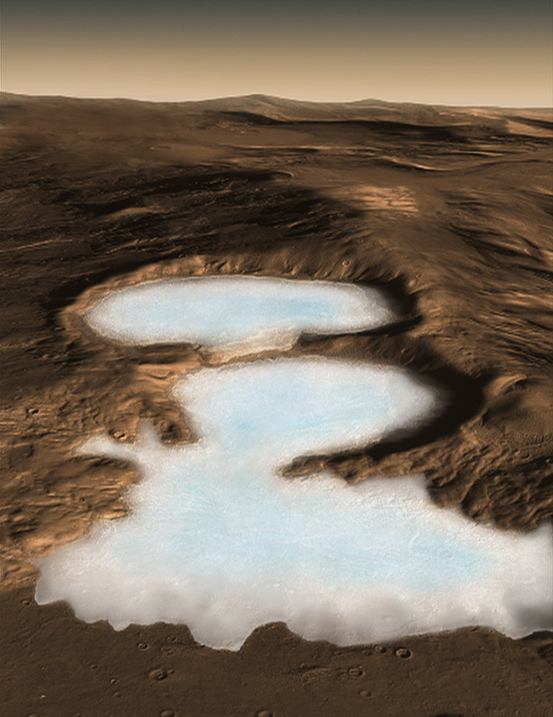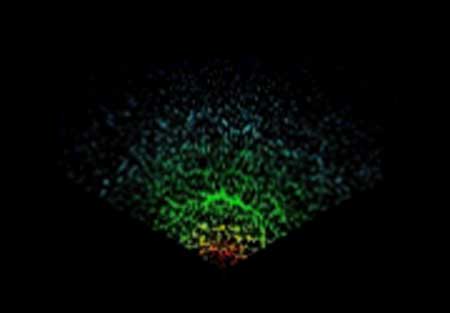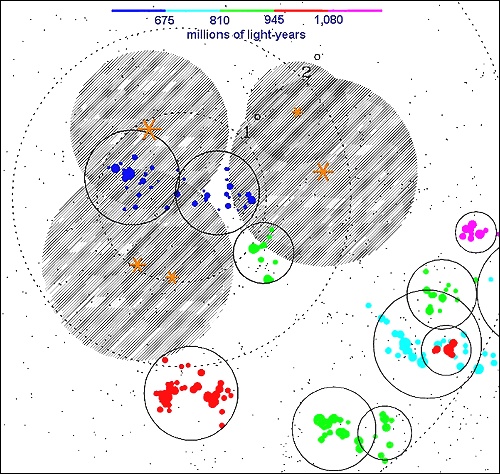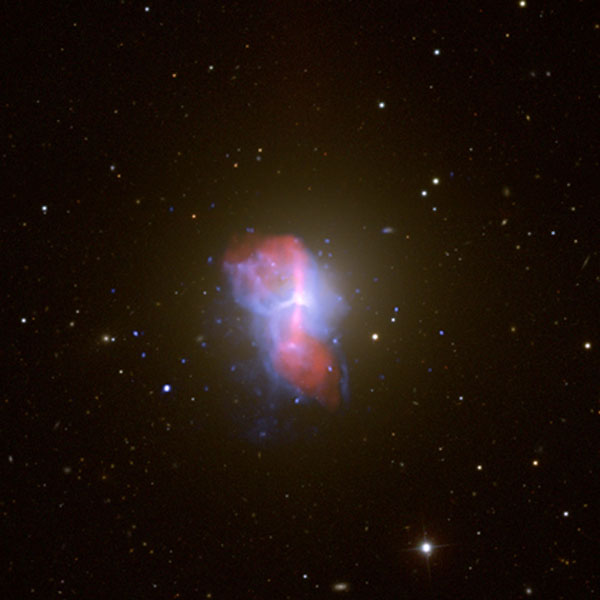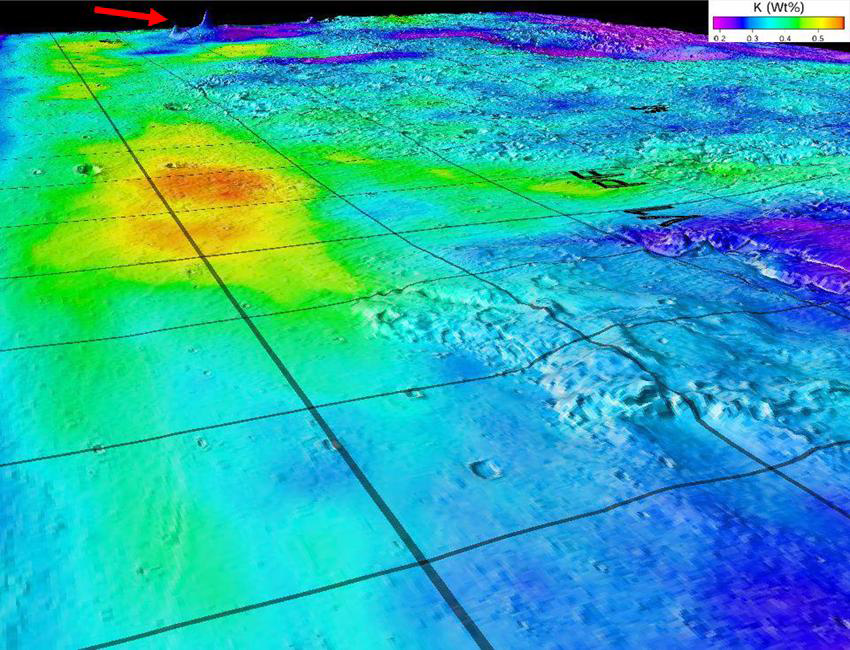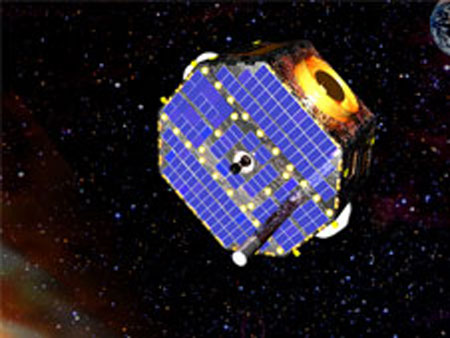Scientists using the European Space Agency’s Mars Express have produced the first crude map of aurorae on Mars. These displays of ultraviolet light appear to be located close to the residual magnetic fields generated by Mars’ crustal rocks. They highlight a number of mysteries about the way Mars interacts with electrically charged particles originating from the Sun.
Mars Express’ Spectroscopy for Investigation of Characteristics of the Atmosphere of Mars (SPICAM) — the ultraviolet and infrared atmospheric spectrometer — discovered the planet’s aurorae in 2004.
Now Francois Leblanc, from the Service d’Aeronomie, France, and colleagues have announced the results of coordinated observation campaigns using SPICAM, the Mars Advanced Radar for Subsurface and Ionosphere Sounding (MARSIS), and the Analyser of Space Plasmas and Energetic Atoms (ASPERA).
They observed nine new auroral emission events that allow them to make the first crude map of auroral activity on Mars. They see that the aurorae seem to be located near regions where the martian magnetic field is the strongest. MARSIS previously had observed higher-than-expected electrons in similar regions. This suggests that the magnetic fields help to create the aurorae.
On Earth, aurorae are more commonly known as the northern and southern lights. They are confined to the polar regions and shine brightly at visible as well as ultraviolet wavelengths. Similar aurorae exist on the giant planets of the solar system. They occur wherever a planet’s magnetic field channels electrically charged particles into the atmosphere.
In all of these planets, the magnetic fields are large-scale structures generated deep in the planet’s interior. Mars lacks such a large-scale internal mechanism. Instead, it just generates small pockets of magnetism where areas of rocks in the martian crust are magnetic. This results in many magnetic pole-type regions all over the planet.
Charged particles, likely electrons in this case, collide with molecules in the atmosphere and produce aurorae. The electrons almost certainly come from the Sun, which constantly blows out electrically charged particles into space. Known as the solar wind, this stream of particles provides the source of electrons to generate the aurorae, as the MARSIS and ASPERA results suggest.
But how the electrons are accelerated to sufficiently high energies to spark aurorae on Mars remains a mystery. “It may be that magnetic fields on Mars connect with the solar wind, providing a road for the electrons to travel along,” says Leblanc.
Any future astronauts expecting a spectacular light show, similar to aurorae on Earth, may be in for a disappointment. “We’re not sure whether the aurorae will be bright enough to be observed at visible wavelengths,” says Leblanc.
The molecules responsible for the visible light show on Earth — molecular and atomic oxygen and molecular nitrogen — are not abundant enough in the martian atmosphere. SPICAM is designed to work at ultraviolet wavelengths and cannot see whether visible light is being emitted as well.
Nevertheless, there is plenty of work for the scientists to do.
“There’s now a large domain of physics that we have to explore in order to understand the aurorae on Mars. Thanks to Mars Express we have a lot of very good measurements to work with,” said Leblanc.



